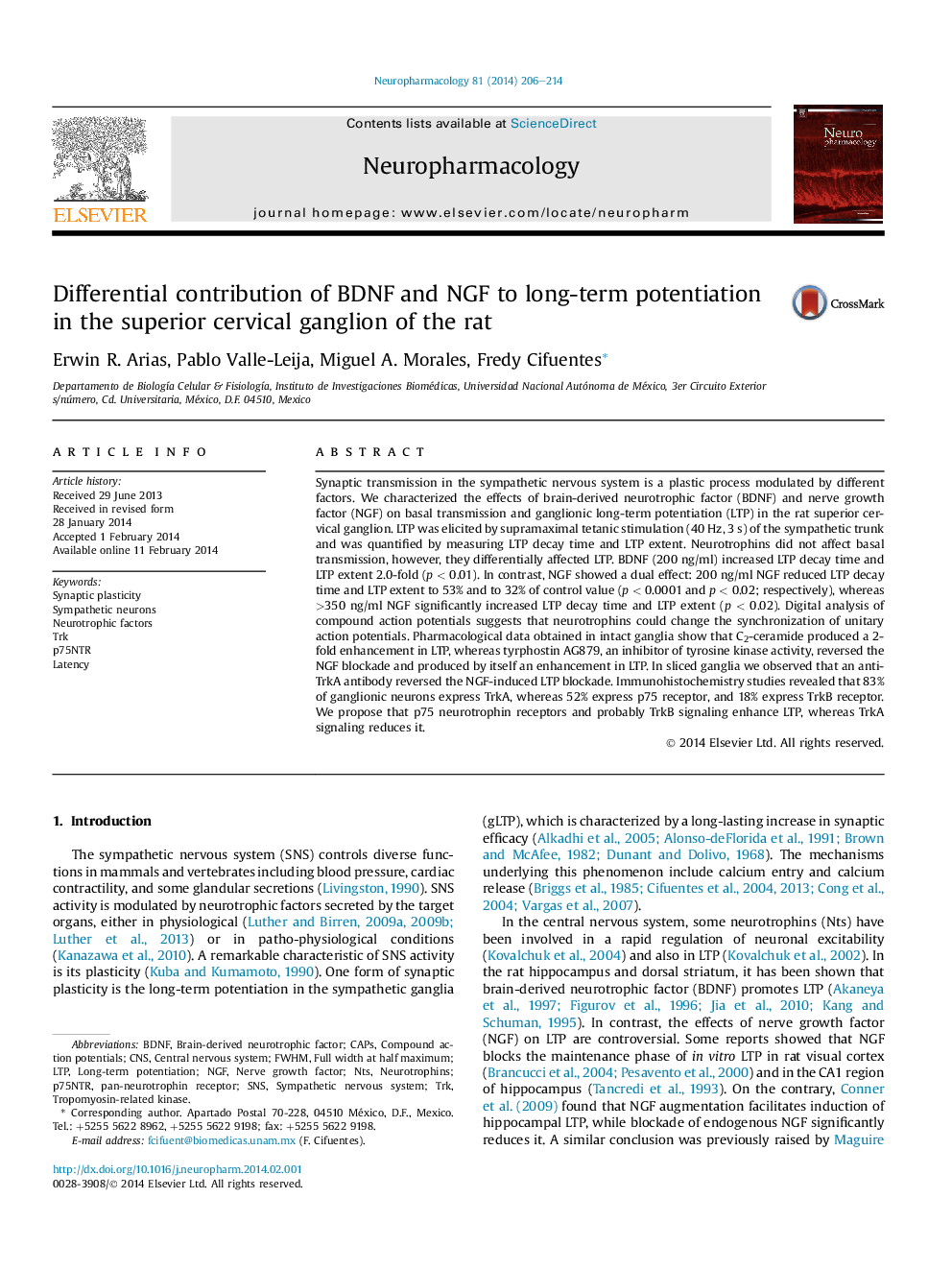| کد مقاله | کد نشریه | سال انتشار | مقاله انگلیسی | نسخه تمام متن |
|---|---|---|---|---|
| 2493246 | 1556633 | 2014 | 9 صفحه PDF | دانلود رایگان |

• Neurotrophins regulate neuronal excitability in sympathetic neurons.
• BDNF and NGF (high dose) enhance ganglionic LTP (gLTP), low dose of NGF inhibits gLTP.
• Signaling via p75 might produce LTP enhancement or via TrkA produce LTP inhibition.
• Neurotrophins can regulate the sympathetic tone in normal or pathological conditions.
Synaptic transmission in the sympathetic nervous system is a plastic process modulated by different factors. We characterized the effects of brain-derived neurotrophic factor (BDNF) and nerve growth factor (NGF) on basal transmission and ganglionic long-term potentiation (LTP) in the rat superior cervical ganglion. LTP was elicited by supramaximal tetanic stimulation (40 Hz, 3 s) of the sympathetic trunk and was quantified by measuring LTP decay time and LTP extent. Neurotrophins did not affect basal transmission, however, they differentially affected LTP. BDNF (200 ng/ml) increased LTP decay time and LTP extent 2.0-fold (p < 0.01). In contrast, NGF showed a dual effect: 200 ng/ml NGF reduced LTP decay time and LTP extent to 53% and to 32% of control value (p < 0.0001 and p < 0.02; respectively), whereas >350 ng/ml NGF significantly increased LTP decay time and LTP extent (p < 0.02). Digital analysis of compound action potentials suggests that neurotrophins could change the synchronization of unitary action potentials. Pharmacological data obtained in intact ganglia show that C2-ceramide produced a 2-fold enhancement in LTP, whereas tyrphostin AG879, an inhibitor of tyrosine kinase activity, reversed the NGF blockade and produced by itself an enhancement in LTP. In sliced ganglia we observed that an anti-TrkA antibody reversed the NGF-induced LTP blockade. Immunohistochemistry studies revealed that 83% of ganglionic neurons express TrkA, whereas 52% express p75 receptor, and 18% express TrkB receptor. We propose that p75 neurotrophin receptors and probably TrkB signaling enhance LTP, whereas TrkA signaling reduces it.
Journal: Neuropharmacology - Volume 81, June 2014, Pages 206–214